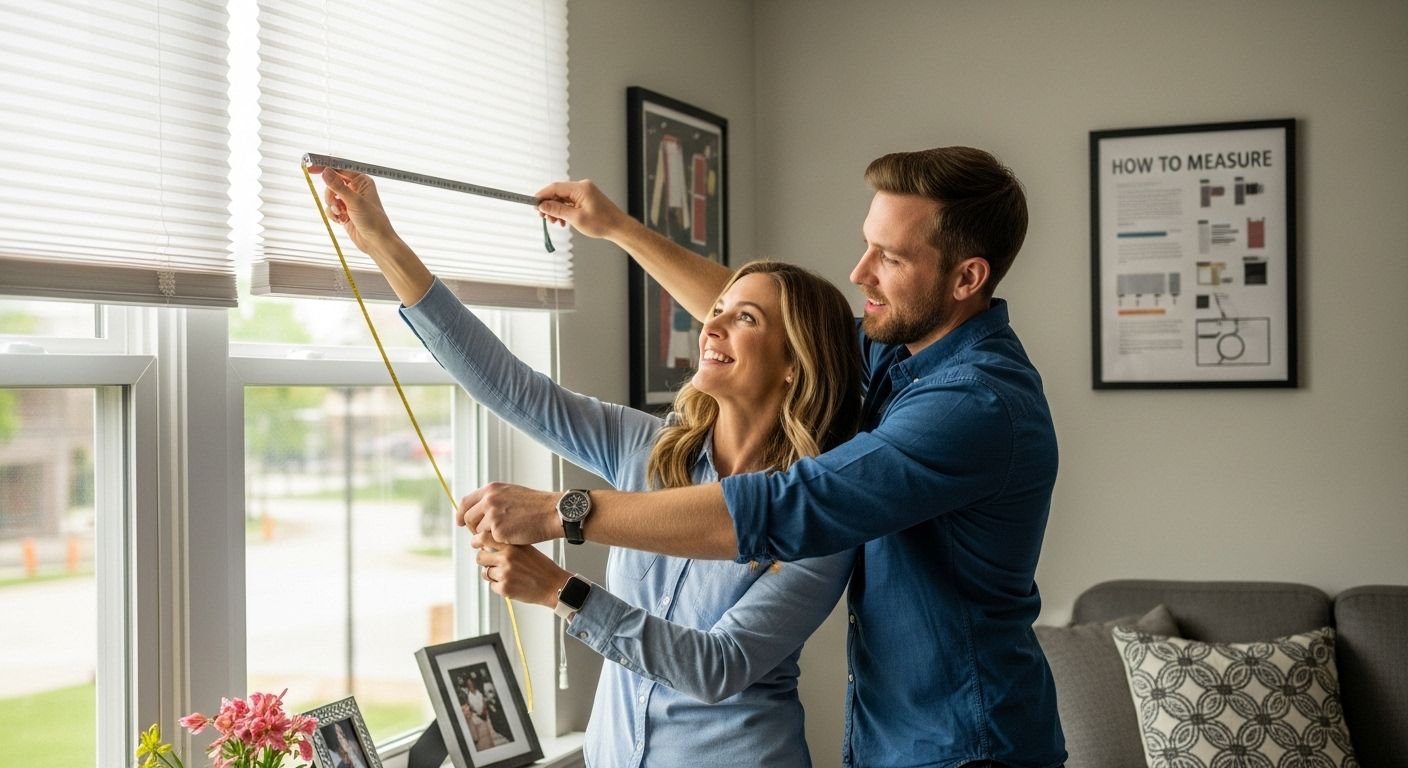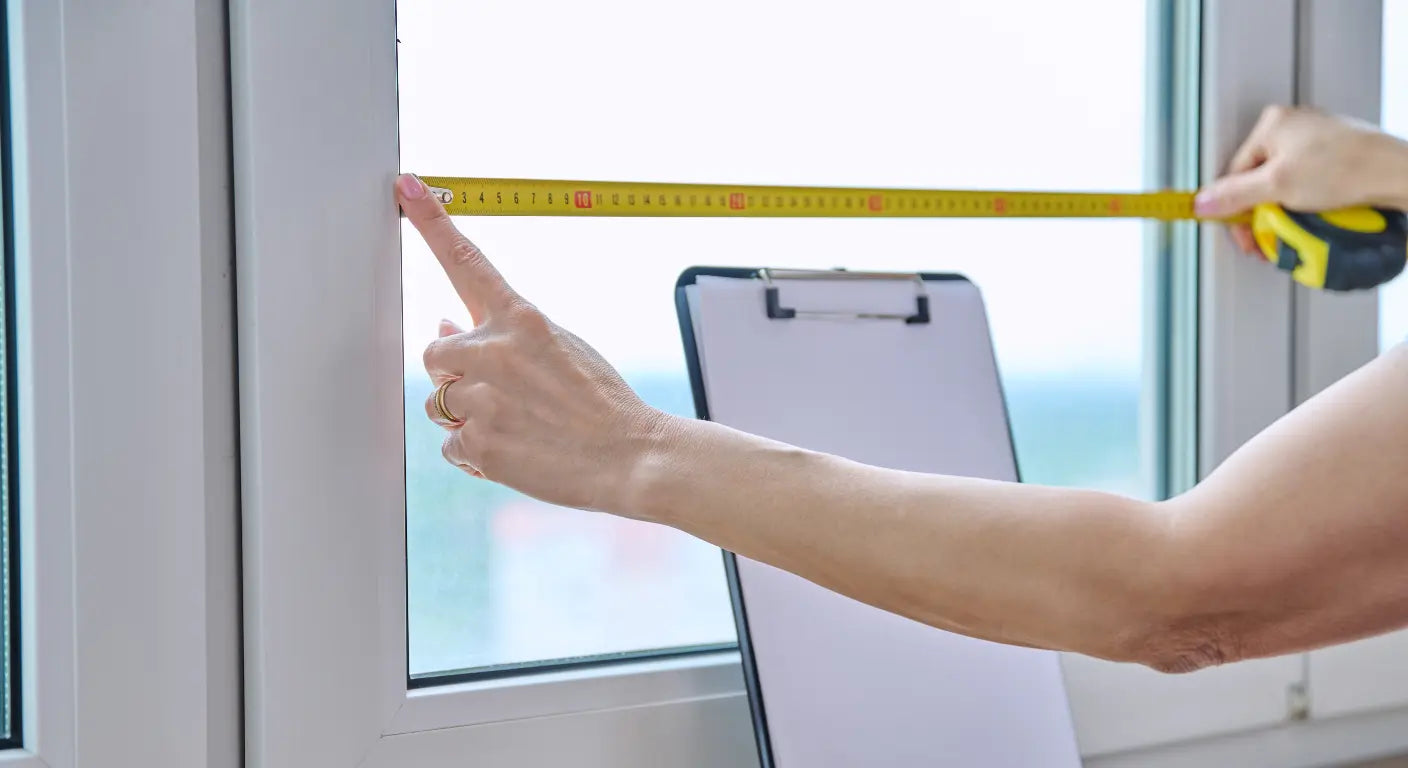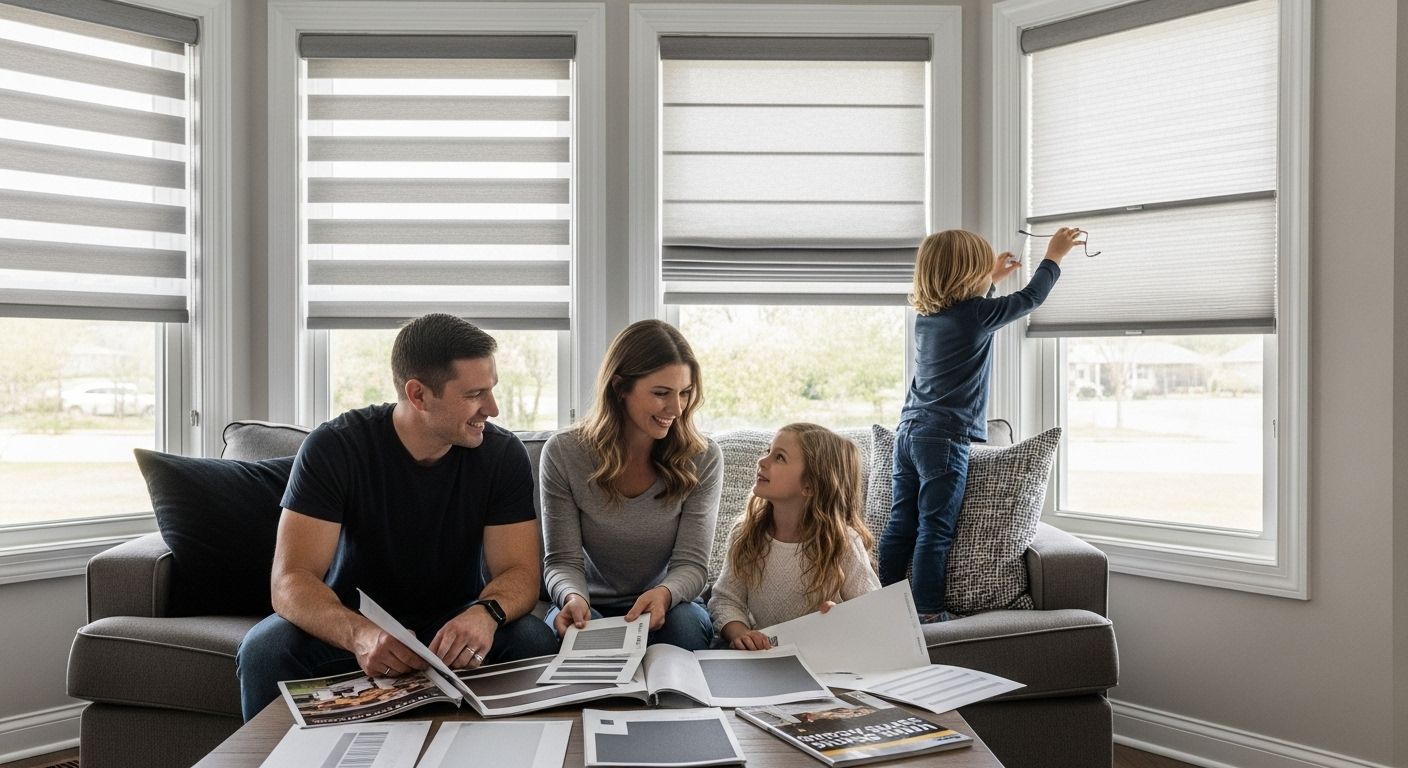
The Ultimate Guide to Types of Window Shades

Window shades do so much more than just cover your windows. They can cut your energy bills since cellular shades can reduce heat transfer by up to 40 percent and even help keep rooms quieter. Most people think shades are just a décor choice or about letting in less sunlight. What surprises many is how the right window shade can completely transform how your home feels and works, from privacy to savings to style.
Table of Contents
Quick Summary
| Takeaway | Explanation |
| Understand different shade types. | Familiarize yourself with window shade options like roller, cellular, and roman shades to enhance decor and functionality. |
| Consider energy efficiency. | Choose shades with insulation capabilities, like cellular shades, to save on heating and cooling costs throughout the year. |
| Assess room-specific needs. | Different rooms require tailored solutions, such as blackout shades for bedrooms and light-filtering shades for living areas. |
| Prioritize safety features. | Opt for cordless or motorized shades to eliminate safety hazards, especially in homes with children. |
| Match shades to your interior design. | Select shades that complement existing decor through color, texture, and style for a cohesive look in your space. |
Understanding Different Types of Window Shades
Window shades are more than just functional coverings they are essential design elements that transform interior spaces. Understanding the various types of window shades helps homeowners make informed decisions about their home decor and light management needs.
The Core Categories of Window Shades
Window shades come in diverse styles, each offering unique characteristics and benefits. Research from the American Blinds Association reveals that homeowners typically choose shades based on three primary considerations: light control, energy efficiency, and aesthetic appeal.
The main categories of window shades include roller shades, cellular shades, roman shades, pleated shades, and solar shades. Each type serves distinct purposes and provides different visual and functional advantages. For instance, cellular shades are renowned for their exceptional insulation properties, while roller shades offer sleek, minimalist design options.
Here’s a comparison table summarizing the key features, benefits, and best uses of each major type of window shade discussed in the article. This helps readers quickly identify which shade might suit their needs best.
| Shade Type | Key Features | Main Benefits | Best For |
| Roller Shades | Sleek, minimalist design; solar options | Precise light control, UV reduction | Modern spaces, living areas |
| Cellular Shades | Honeycomb structure, insulating layers | Reduces heat transfer by up to 40% | Energy efficiency, bedrooms |
| Roman Shades | Soft fabric folds, varied textures | Elegant style, material variety | Traditional & formal spaces |
| Pleated Shades | Folded fabric, simple construction | Affordable, light filtering | Budget-friendly rooms |
| Solar Shades | Screen material, UV filtering | Maintains view, reduces glare/UV | Home offices, sunrooms, large windows |
| Blackout Shades | Dense, light-blocking material | Complete darkness, noise reduction | Bedrooms, home theaters |
Functional Considerations in Shade Selection
Choosing the right window shade involves understanding specific performance characteristics. According to energy efficiency experts at the Department of Energy, window treatments can reduce heat gain by up to 45% during summer months and minimize heat loss by approximately 10% in winter.
Key factors to consider include light filtering capabilities, privacy levels, thermal insulation, and room-specific requirements. For example, blackout shades work perfectly in bedrooms and home theaters, while light-filtering shades are ideal for living areas where natural light is desired.
Design and Aesthetic Potential
Modern window shades are not just functional but also significant design elements. Homeowners can select from a wide range of materials including fabric, wood, synthetic composites, and specialized textiles. Color and texture play crucial roles in complementing existing interior design schemes.
Customization options have expanded dramatically, allowing individuals to select specific opacity levels, motorization features, and decorative trims. This flexibility ensures that window shades can be tailored to match virtually any design aesthetic, from contemporary minimalist to traditional and ornate.
For those interested in exploring more detailed information about selecting the perfect window treatment, check out our comprehensive guide on window treatments.
By understanding the nuanced world of window shades, homeowners can make informed decisions that enhance both the functionality and visual appeal of their living spaces.
Comparing Features and Benefits of Each Shade
Window shades are not a one-size-fits-all solution. Each type offers distinct advantages tailored to specific functional and aesthetic requirements, making the selection process critical for homeowners seeking optimal performance and style.
Performance and Energy Efficiency Characteristics
Below is a summary table of energy efficiency statistics and performance data for different types of window shades, as referenced in the article. This allows readers to compare the quantitative impact of various options.
| Shade Type | Heat Transfer Reduction | Solar Heat Gain Reduction | Season/Use Case |
| Cellular Shades | Up to 40% | N/A | Insulation (Year-round) |
| Roller Shades (Solar) | N/A | ~35% | Summer sun, living rooms |
| All Window Treatments* | ~10% (Winter) | Up to 45% (Summer) | Seasonal energy savings |
| Blackout Shades | N/A | N/A | Darkness & noise control |
*Based on general Department of Energy data for window attachments.
Research from the National Renewable Energy Laboratory demonstrates that different window shade types dramatically impact home energy performance. Cellular shades, for instance, create air pockets that provide superior insulation, reducing heat transfer by up to 40%. These honeycomb-structured shades trap air between layers, creating a thermal barrier that keeps interiors cooler in summer and warmer in winter.
Roller shades present another compelling option, particularly for modern, minimalist spaces. Their sleek design allows for precise light control and can be manufactured with specialized solar-reflective materials. According to the Department of Energy, solar-reflective roller shades can reduce solar heat gain by approximately 35%, significantly lowering cooling costs during warm months.
Material and Aesthetic Versatility
Modern window shades transcend mere functionality, serving as integral design elements. Roman shades exemplify this principle, offering elegant fabric options that range from lightweight linens to luxurious velvet textures. These shades create soft, sculptural folds when raised, adding visual depth and sophistication to interior spaces.
Solar shades provide unique benefits for rooms with significant sunlight exposure. Constructed from specialized screen materials, they filter harmful UV rays while maintaining exterior views. This makes them particularly valuable in home offices, living rooms, and spaces with expansive windows facing direct sunlight.
Specialized Shade Technologies
Advanced shade technologies have revolutionized window treatments. Motorized options now allow precise control through smartphone apps or voice commands, offering unprecedented convenience. For those interested in exploring cutting-edge window treatment solutions, our guide on smart home integration provides comprehensive insights into these innovative systems.
Blackout shades represent another technological marvel, utilizing dense, light-blocking materials perfect for bedrooms, home theaters, and spaces requiring complete darkness. These shades often incorporate noise-reduction properties, creating serene environments by minimizing external sound transmission.
Choosing the right window shade involves carefully evaluating your specific needs: energy efficiency, light control, privacy, aesthetic preferences, and room-specific requirements. By understanding the unique characteristics of each shade type, homeowners can transform their living spaces into more comfortable, stylish, and functional environments.
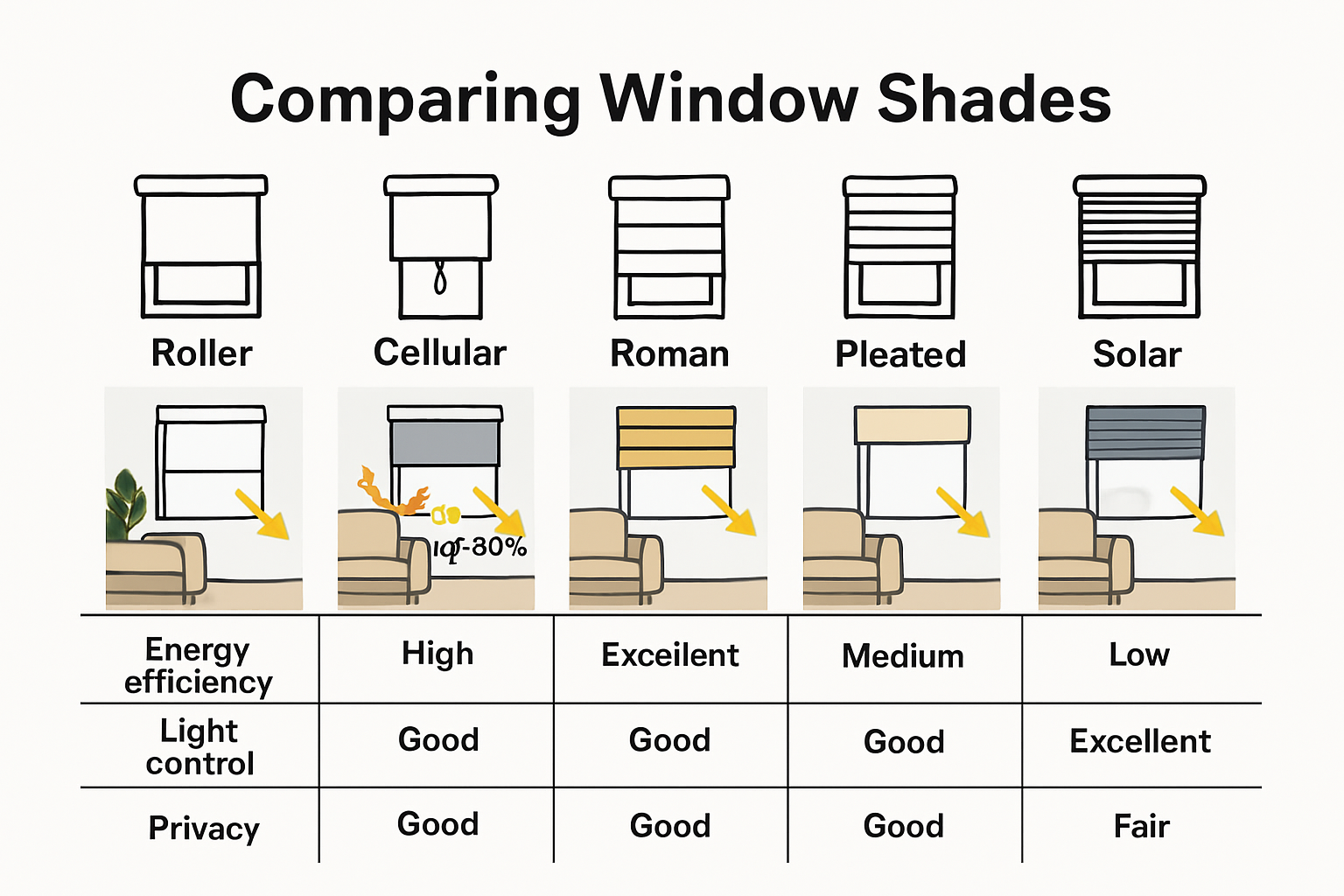
How to Choose the Right Window Shades for Your Space
Selecting the perfect window shades requires a strategic approach that balances functionality, aesthetic appeal, and specific room requirements. The right window treatment can transform a space, enhancing both its visual appeal and practical performance.
Assessing Room-Specific Needs
According to Consumer Reports, different rooms demand unique window shade solutions. Bedrooms benefit from blackout shades that provide complete light blocking and privacy, while living areas thrive with light-filtering options that maintain exterior views and natural illumination.
Key considerations include window orientation, sunlight exposure, and room function. South-facing windows receive maximum sunlight and require shades with superior heat-reduction capabilities. Home offices might prioritize glare reduction, whereas media rooms need maximum light control. Consider factors like room temperature, furniture placement, and daily activity patterns when making your selection.
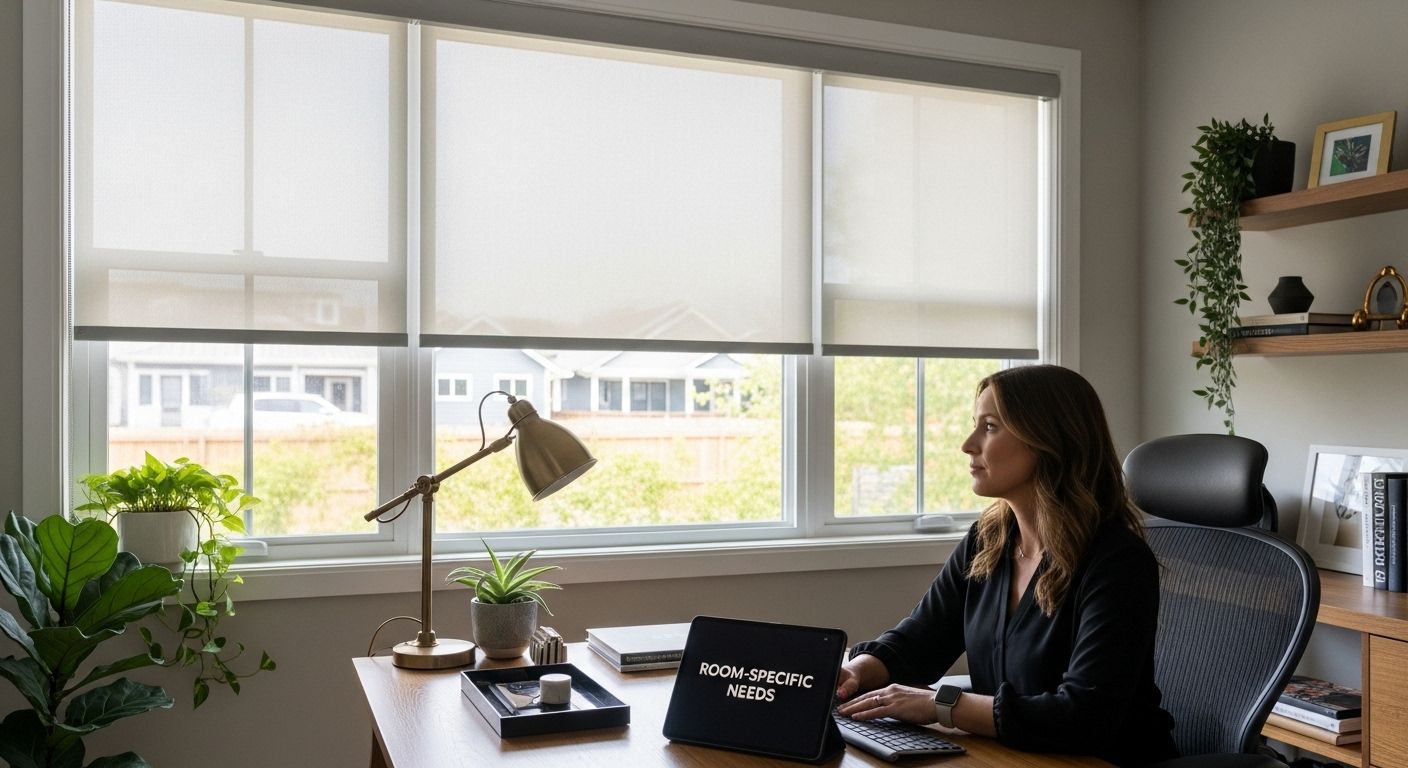
Safety and Practical Considerations
The U.S. Consumer Product Safety Commission strongly recommends cordless window treatments to eliminate potential child safety hazards. Modern shade technologies offer multiple safe operation methods, including motorized controls and cordless designs that provide both convenience and protection.
Measurement precision is crucial. Improper sizing can compromise shade functionality, reduce energy efficiency, and create unsightly gaps. Professional measurement services or detailed DIY guides can help ensure accurate fitting. Consider additional features like thermal backing, noise reduction, and UV protection based on your specific environmental needs.
Matching Shades to Interior Design
Window shades should complement your existing interior design scheme. Color, texture, and opacity play significant roles in creating a cohesive aesthetic. Neutral tones offer versatility, while bold colors can serve as statement pieces. For comprehensive guidance on selecting window treatments that enhance your home’s style, explore professional design resources that provide expert insights.
Research from the Florida Solar Energy Center emphasizes that exterior shading strategies can dramatically improve indoor comfort. Consider how window shade selections interact with architectural elements, natural light patterns, and overall room design.
Ultimately, choosing the right window shades involves balancing multiple factors: energy efficiency, aesthetic preferences, room-specific requirements, and personal comfort. By carefully evaluating these elements, homeowners can select window treatments that not only look beautiful but also enhance their living spaces’ functionality and comfort.
Frequently Asked Questions
What are the different types of window shades?
The main types of window shades include roller shades, cellular shades, roman shades, pleated shades, solar shades, and blackout shades. Each type offers unique features and benefits tailored for various light control, energy efficiency, and aesthetic needs.
How do cellular shades improve energy efficiency?
Cellular shades have a honeycomb structure that creates air pockets, providing superior insulation. This design can reduce heat transfer by up to 40%, helping to keep interiors cooler in summer and warmer in winter, ultimately lowering energy bills.
What should I consider when choosing window shades for different rooms?
When selecting shades, consider the room’s function and its sunlight exposure. For example, bedrooms may benefit from blackout shades for total darkness, while living areas might use light-filtering shades to maintain natural light and views.
Are motorized window shades worth it?
Motorized window shades offer convenience and precision, allowing you to control them via smartphone apps or voice commands. They are particularly beneficial for hard-to-reach windows and enhance safety by eliminating cords, making them a great investment for modern homes.
Find the Perfect Shade for Your Unique Needs—Shop Custom Solutions Now
If you have been searching for window shades that do more than just cover your windows, you are not alone. Many readers realize that style, privacy, and energy efficiency all matter. The article highlighted how choosing the right window shade can dramatically impact your comfort, utility savings, and overall home atmosphere. But the real challenge is finding shades that fit your specific needs, whether you want blackout solutions for restful sleep, child-safe cordless designs for peace of mind, or energy-efficient options to cut down on bills. Does your space need light filtering in busy common areas or complete privacy in personal rooms? You deserve shades that meet every expectation, not just part of the list.
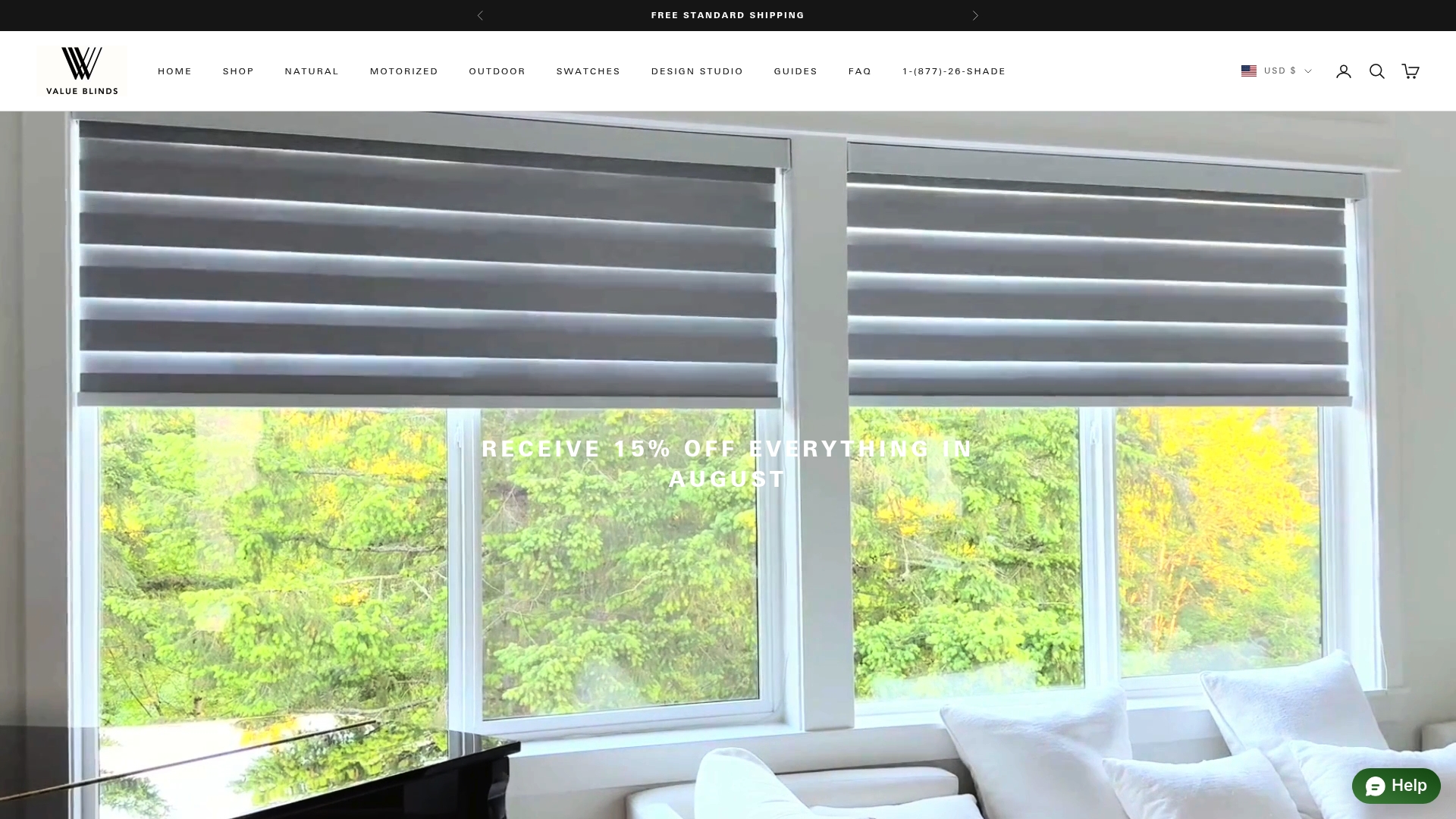
At Value Blinds Direct, you can take the guesswork out of choosing window coverings. Our Trending Features collection brings together the best in blackout, cordless, motorized, and energy-saving shades, making it easy for you to find the right fit for every room. Shop now to experience convenient online customization, see free swatches in your home, and enjoy dedicated expert support. Visit our main site and transform your home with shades designed just for you. Take control of your light, comfort, and style—explore your options today before seasonal promotions end.


